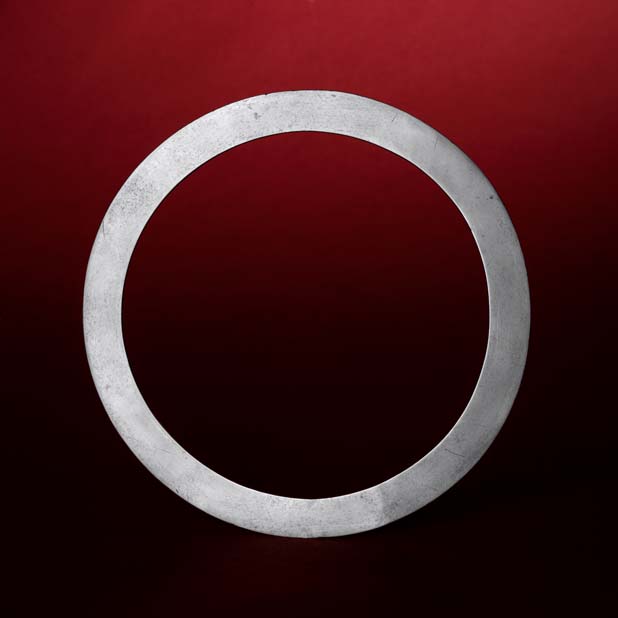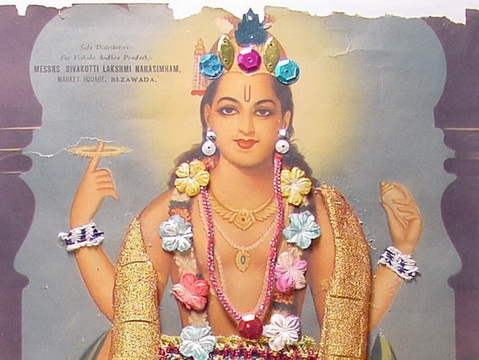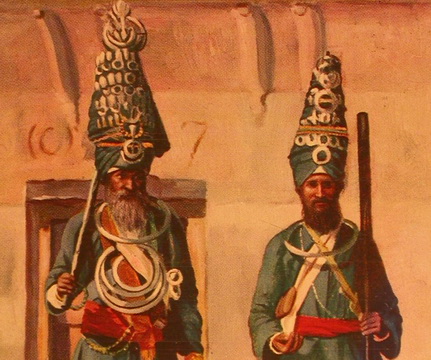Weapon Wednesday: Chakram from India
Published
Categories
Author
Blog Post
Written by Aruna Panday, Ph.D Candidate in the Department of Anthropology at York University, Friends of South Asia co-Chair, and Summer 2014 ROM curatorial intern.

Chakram or battle-quoit, made of wrought steel, India, 19th century, ROM 910.42.52
Fans of the Fantasy show Xena Warrior Princess (which ran 1995-2001) will recognize the chakram as one of the weapons in her arsenal. While there is a fictional back story to her weapon (that holds the monikers of the Chakram of Light, the Dark Chakram and the Balanced Chakram) the chakram is in fact a real weapon that originated in South Asia.
A chakram, also known as chakra, chakkar, chalikar, or battle quoit, is an Indian throwing weapon first mentioned in the ancient Hindu text, the Rig Veda, where it is described as "glowing." An apt description for this steel, or brass circular weapon sharpened on the outer edge, that is thrown toward the enemy by rotating it on one's upright index finger to distances of up to 100 metres with great speed! In these ancient texts, Rig Veda, Yajur Veda and the Puranas (written 1500-100 BCE), Vishnu, the preserver of the universe wields the chakram in his battle against dark forces. Vishnu's chakram, made of leftover sun dust and possessing 108 serrated edges, is named Sudarshan Chakra which means, "vision of that which is auspicious, to do movement." Thus, in Hinduism, the chakram, symbolizes clearing of the path to God.

Detail of embroidered devotional print of Vishnu with Chakram in upper right hand, early 20th century, ROM 2004.49.3
Chakram have either smooth or serrated edges. They can be simple steel designs or they can be ornate, accented with contrasting metals, etched, inlayed with silver or gold. Often they are decorated using the koftghari technique whereby tiny incisions are made into the steel into which gold is hammered. The result is a fine gold decoration, often floral, applied by pressure alone.

Detail of postcard image of Sikh Akalis wearing multiple chakram, early 20th century, ROM 2006.49.4

An image of the Nishan Sahib, the Sikh holy flag bearing the khanda symbol that incorporates a chakram in its design.
In more recent times the chakram is known as the weapon of the Sikhs, a religious and cultural group predominatly from the north-western state of Punjab in India. Nihang or Akalis Sikhs favoured the weapon and are famed for having worn multiple chakrams, sometimes as many as eight, of varying diameters, on their turbans or around their necks, for easy access in times of battle, such as fighting against persecution during the Mughul period (1556-1707) and during the Anglo-Sikh Wars (1845-6, 1848-9). The turbans they wore to hold the chakrams were not the same as the turbans Sikh men wear for daily life. Rather they were conical thin frames covered with indigo coloured cotton (blue is an auspicious colour) that would support the weight of the chakrams and other weapons. Today, the Nishan Sahib, the Sikh holy flag that flies outside of all Sikh gurdwara's (places of worship) portrays the khanda, a symbol of the Sikhs that features a chakram in its design. A circle with neither beginning nor end, the chakram becomes an aniconic symbol of the perfection of the eternal God.


